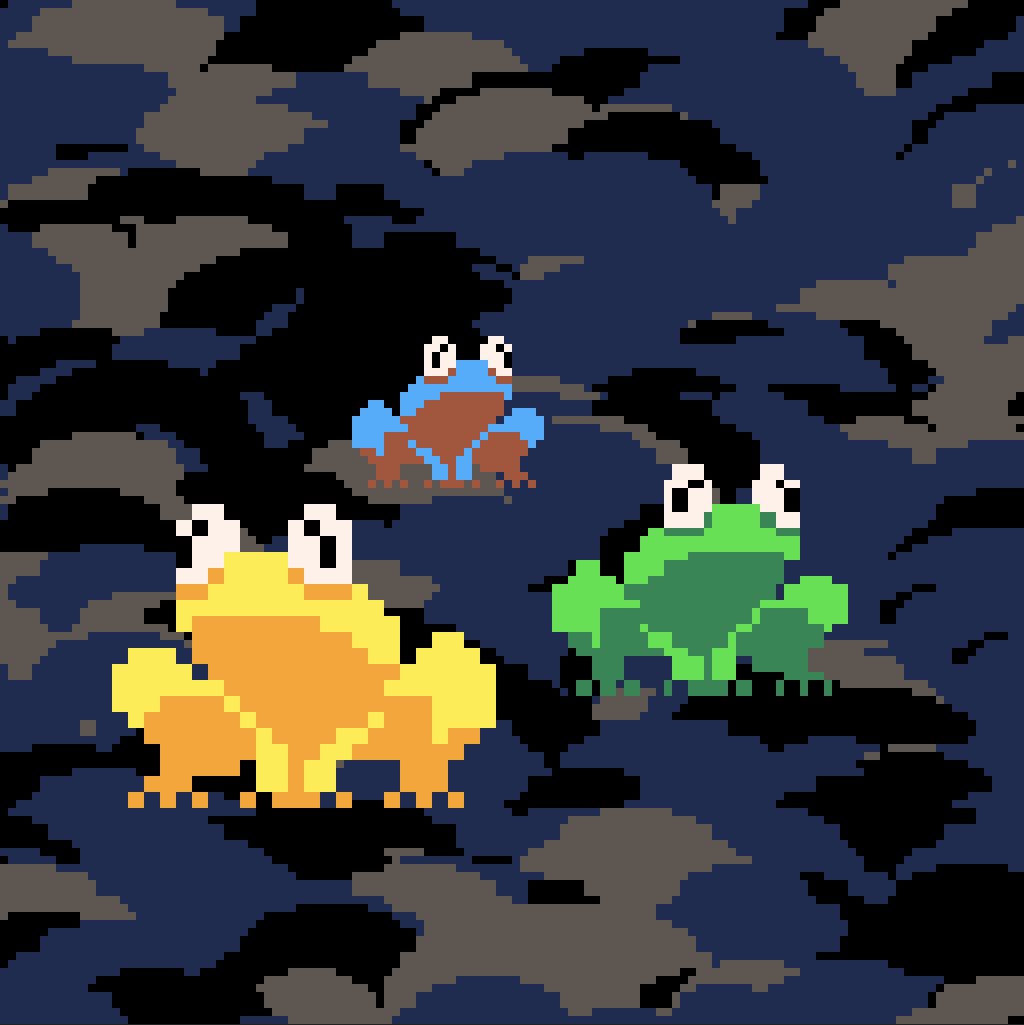Earlier this week I released Pico-Pond, a networked PICO-8 demake of Frog Chorus, a web-project I love by v buckenham and Viviane Schwarz.
You can play Pico-Pond for free in your browser here: https://andymakes.itch.io/pico-pond
You can also look through the source code, which I hope will be helpful for anybody else looking to make a networked PICO-8 game. The code is commented and (hopefully) easily readable.
- Frontend Code: https://github.com/andymasteroffish/pico_pond_front
- Backend Code: https://github.com/andymasteroffish/pico-pond-backend
Please keep in mind that this was a weekend project that was never meant to scale beyond 20 players. I did not try to make it super efficient or account for every edge case.
Overview








 0 comments
0 comments